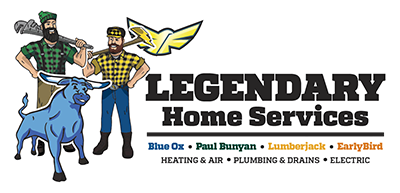Quick, what do you think of when you read the word “heat?” We’re no Amazing Kreskin, Nostradamus, or David Blaine, but we’d make a small bet that we can read your mind. You thought of “fire,” didn’t you?
Now, we may be wrong. You might have thought of the Miami basketball team, the movie with DeNiro, Pacino and Kilmer, or that Glenn Frey song. Whatever you thought of, we’d make a HUGE bet you didn’t think of “resistance.” When it comes to heating homes, however, resistance is almost as common a heat generator as fire. Electric furnaces heat homes by generating resistance, and electric furnaces are very common. 62% of people heat their homes with fire, while 34% use electricity. (3% have no heating, while 1% use other alternatives).
If you want to make a wager you’ll win, bet we’ll start this blog the way we always do: with a little background information.
How Electric Furnaces Work
First, a little science about resistance! For our purposes, resistance is measured by how strongly an object impedes the flow of electricity. Let’s put it another way. When an electric current runs through an object with high resistance, there’s less space for the current. The less space the current has, the more the electrons in the current collide with each other. As they struggle for space and bump into each other, they create heat.
An electric furnace creates heat by sending electricity through tightly-wound metal coils. Of course, because those coils are so tight, they resist and impede the current’s flow. The electrons flowing through the coils bump and collide with one another, creating heat. Meanwhile, a fan moves air over those very hot coils, warming the air. After passing it over the hot coils, the fan pushes the warm air into the vents. From there, it spreads throughout the whole home. When you want your home to be warmer, just turn up the thermostat and send more electricity through the coils. That creates even more resistance and, of course, more heat.
Now that you know how an electric furnace works, let’s look at what happens when they aren’t working. Here are a few common electric furnace problems, and what you can do about them.
Trouble Shooting Your Electric Furnace
- If the furnace isn’t working, the first thing you should do is make sure the power switch is turned on. You’ll find the power switch on or near the furnace. If the power’s on and the furnace still isn’t working, check your electrical service panel next. Look for a blown fuse or tripped breaker. Some electric furnaces have a built-in breaker or fuse panel. Check the unit for a reset button and try that.
- If there’s not enough heat, raise the setting on your thermostat by at least five degrees to see if the unit turns on. If the unit still does not generate enough heat, check the thermostat to make sure it’s working. Next, check the filter. If it’s dirty, clean or replace it. Clean the blower assembly while you’re at it. Finally, make sure the registers are open.
- If the furnace turns on and off constantly, clean or replace the filter and clean the blower assembly.
- If the furnace is noisy, the noise could be coming from several different places. You might need to replace worn or damaged belts. You could also try spraying any squeaking belts you hear with fan-belt dressing. Loose access panels might blow around and make a lot of noise, so try re-fastening them securely. You may also need to adjust the blower belt and/or lubricate motor and blower oil ports.
If resetting circuit breakers or replacing damaged fuses doesn’t restore power to your furnace, we’d recommend getting a pro’s help. Early Bird’s licensed electricians can solve your electric furnace problems fast.
We bet you learned a little about electric furnaces, didn’t you? But what makes them different from gas furnaces? Is one type of furnace better than the other? In part 2, we’ll answer these questions by comparing the pros and cons of both electric and gas furnaces. We’ll bet you’ll learn some valuable new information–and it’s a safe bet for you to make, too.

